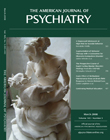Prefrontal Function and Activation in Bipolar Disorder and Schizophrenia
Abstract
Objective: Distinctive patterns of speech and language abnormalities are associated with bipolar disorder and schizophrenia. It is, however, unclear whether the associated patterns of neural activation are diagnosis specific. The authors sought to determine whether there are differences in language-associated prefrontal activation that discriminate bipolar disorder and schizophrenia. Method: Forty-two outpatients with bipolar I disorder, 27 outpatients with schizophrenia, and 37 healthy comparison subjects were recruited. Differences in blood oxygen level-dependent activity were evaluated using the Hayling Sentence Completion Test and analyzed in Statistical Parametric Mapping (SPM) 2. Differences in activation were estimated from a sentence completion versus rest contrast and from a contrast of decreasing sentence constraint. Regional activations were related to clinical variables and performance on a set shifting task and evaluated for their ability to differentiate among the three groups. Results: Patients with bipolar disorder showed differences in insula and dorsal prefrontal cortex activation, which differentiated them from patients with schizophrenia. Patients with bipolar disorder recruited the orbitofrontal cortex and ventral striatum to a greater extent relative to healthy comparison subjects on the parametric contrast of increasing difficulty. The gradient of ventral striatal and prefrontal activation was significantly associated with reversal errors in bipolar disorder patients. Conclusions: Brain activations during the Hayling task differentiated patients with bipolar disorder from comparison subjects and patients with schizophrenia. Patients with bipolar disorder showed abnormalities in frontostriatal systems associated with performance on a set shifting task. This finding suggests that bipolar disorder patients engaged emotional brain areas more than comparison subjects while performing the Hayling task.



